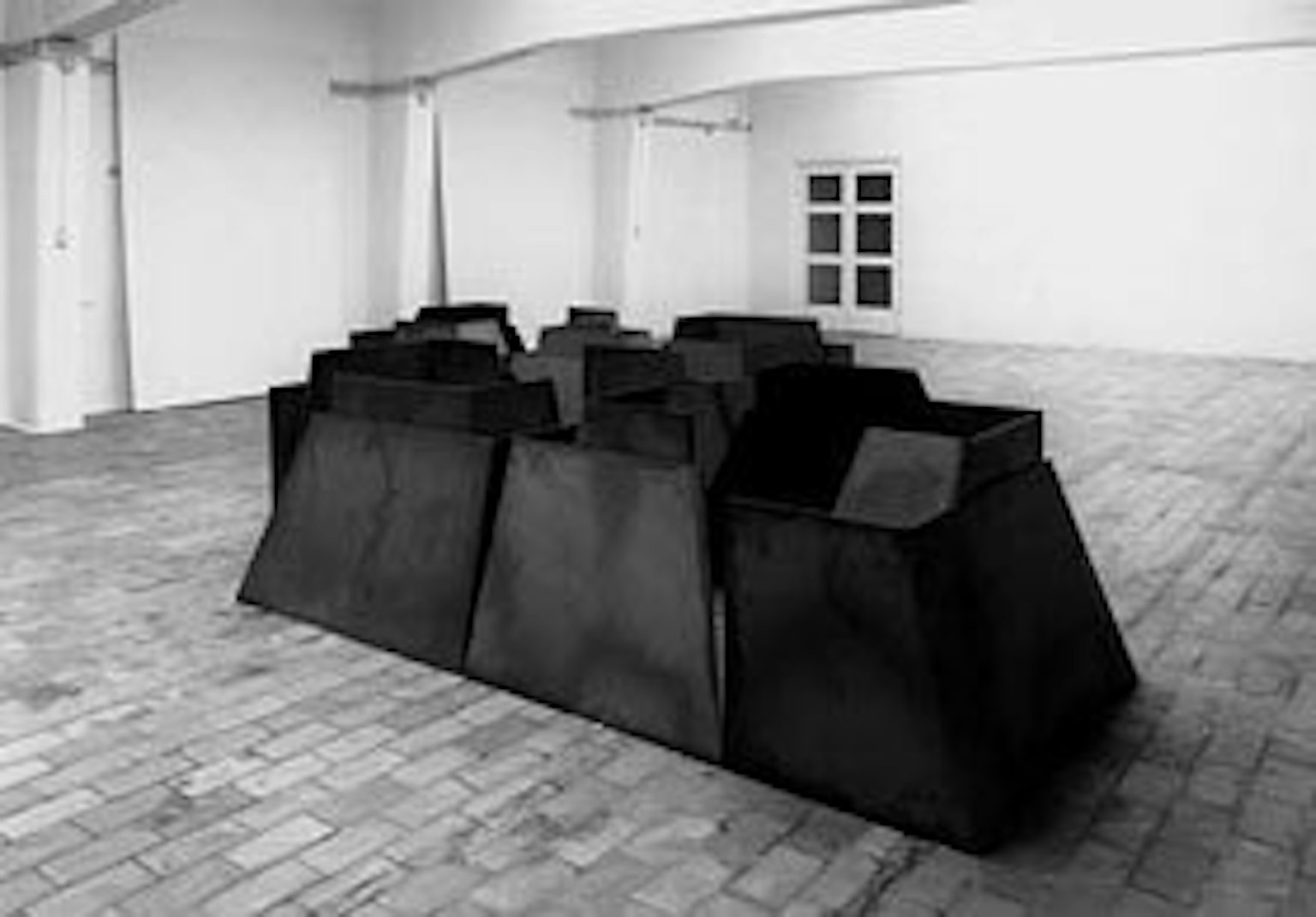The Canadian artist Royden Rabinowitch (b. Toronto, 1943) has been working as an artist since 1962. The Museum of Contemporary Art organised his first one-man show in its former building in Ghent in 1984.
Since then his work has been included in Chambres d’Amis (1986), Open Mind (1989), Minima(a)l (1992 and Documenta IX (1992).
In this exhibition, the impressively titled ‘Handed operator bundles through two or three axes limited to local ocular or local somatic descriptions’. It comprises a series of vertically-oriented ‘bodies’ in steel which together form a labyrinthine construction. The slope of a cone is the basic form. Four white cloths are also set up against the walls of the exhibition room, each containing several circular pencil lines. Rabinowitch studied physics and mathematics. Even while still studying, he already realised that the abstract ‘scientific’ space has no resemblance to our direct experience of concrete space. It was this antinomy that led him to become an artist. The abstract geometrical space is also an untruth with regard to sculpture. A sculpture only acquires a meaning in concrete space. It is precisely this antinomy between reason and intuition and between abstraction and directness, that fuels the theoretical discourse that steers Rabinowitch’s work. He wants to expose and question the premises of modern Western science regarding physical space. Humans are rhythmical beings whose every action is a rhythmical movement. The direct experience of space is both personal and the result of movement. Our physicality comes into play here. Rabinowitch has the following to say about the work shown in this exhibition, ‘As a spectator you can experience the work in two ways. If you move in and around the construction, the image you build up is the result of a succession of observations. You experience the depth. The meaning the work acquires depends on the way you walk around it. If you stand still and look at the work, it becomes virtually meaningless. But you still have the notion of depth, even though you do not experience it directly. You just see fluctuations in a plane as a consequence of the memory of the movement. These two ways of observing the construction can be compared to listening to a blues song. If you listen to the first notes you recognise the song. If the song leads to a rhythmical dance, the experience assumes a deeper meaning.’ This work is in fact based on the blues song A Fool in Love by Ike Turner.

